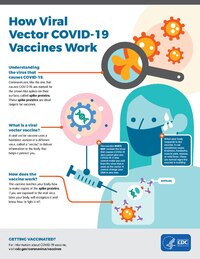
Photo from wikipedia
Transmissible vaccines offer a revolutionary approach for controlling infectious disease and may provide one of the few feasible methods for eliminating pathogens from inaccessible wildlife populations. Current efforts to develop… Click to show full abstract
Transmissible vaccines offer a revolutionary approach for controlling infectious disease and may provide one of the few feasible methods for eliminating pathogens from inaccessible wildlife populations. Current efforts to develop transmissible vaccines use recombinant vector technology whereby pathogen antigens are engineered to be expressed from innocuous infectious viral vectors. The resulting vaccines can transmit from host to host, amplifying the number of vaccine‐protected individuals beyond those initially vaccinated directly through parenteral inoculation. One main engineering challenge is the potential for natural selection to favor vaccine mutants that eliminate or reduce expression of antigenic inserts, resulting in immunogenic decay of the vaccine over time. Here, we study a mathematical model of vector mutation whereby continuous elimination of the antigenic insert results in reversion of the vaccine back into the insert‐free vector. We use this model to quantify the maximum allowable rate of reversion that can be tolerated for a transmissible vaccine to maintain a critical threshold level of immunogenicity against a target pathogen. Our results demonstrate that even for transmissible vaccines where reversion is frequent, performance will often substantially exceed that of conventional, directly administered vaccines. Further, our results demonstrate the feasibility of designing transmissible vaccines that yield desired levels of immunogenicity, yet degrade at a rate sufficient for persistence of the recombinant vaccine within the environment to be minimized.
Journal Title: Evolutionary Applications
Year Published: 2019
Link to full text (if available)
Share on Social Media: Sign Up to like & get
recommendations!